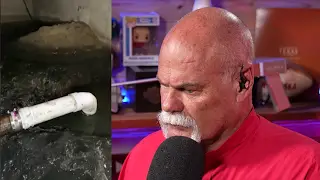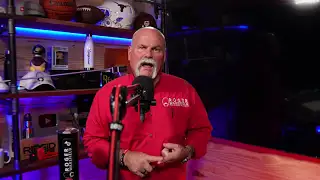Inspecting your plumbing like a pro might seem like a daunting task, but with a few tips and tricks, you can ensure your home’s plumbing is in top shape without needing to call in a professional. Today I want to talk you through a real-deal home plumbing inspection I recently did on a house here at The Outhouse.
Let’s start with something simple: a backed-up sink. If you turn on the water and it doesn’t drain properly, that’s your first red flag. A clogged drain can lead to bigger issues if left unchecked, so it’s something you’ll want to address right away.
Next, I want to talk about something most people overlook—the vacuum breaker on your hose. This little gadget is crucial because it prevents backflow into your clean water supply. If you don’t have one installed, it’s time to get that taken care of. And yes, I know people hate the fact that you can’t remove them once they’re installed, but trust me, it’s better than dealing with contaminated water.
Now let’s head out to the valve box. It’s crucial to know where your water shut-off valve is located and whether it works smoothly. You don’t want to be scrambling during an emergency, trying to find where to shut off your water, all the while you’ve got water flooding your home. I always recommend cycling these valves periodically to keep them in good working order, to make sure you can easily turn the water on and off.
Let’s talk about your water heater. You want to check for any leaks or signs of wear. For example, the water heater I inspected had a plastic drain valve—these things are notorious for failing. I prefer to swap them out for a brass valve for peace of mind. This one also didn’t have a drain pan, something I definitely want to add in. Also, you want to make sure your venting is properly aligned; a misaligned vent can lead to dangerous carbon monoxide buildup.
When we moved to the garage, we found a bathroom that was clearly an add-on. There were a lot of things in this bathroom that were just fine. But there was one thing I had a major issue with: accordion piping under the sink. I don’t know why the big box stores sell these. We’re going to replace this with a regular P-trap.
We found something even more interesting in the next bathroom. The shower had controls installed at a strange height. It looked like they ripped out the bathtub and made it a large shower, then left the controls for the shower at the height they’d been at for the bathtub. Worse, there was cracked tile—signs of a possible leak. We’ll need to run a shower pan test to confirm whether there’s a hidden issue here. This is why a thorough inspection is so important; you don’t want surprises later on.
So, what did we learn today? A proper inspection means more than just looking at what’s visible. It’s about getting into the details, checking valves, checking connections, checking fixtures and pipes. Regular inspections and knowing your plumbing system can prevent costly repairs and give you peace of mind.
I hope this walk-through inspires you to take a closer look at your own plumbing system. Remember, regular inspections and small fixes now can save you a ton of money and headache later.




